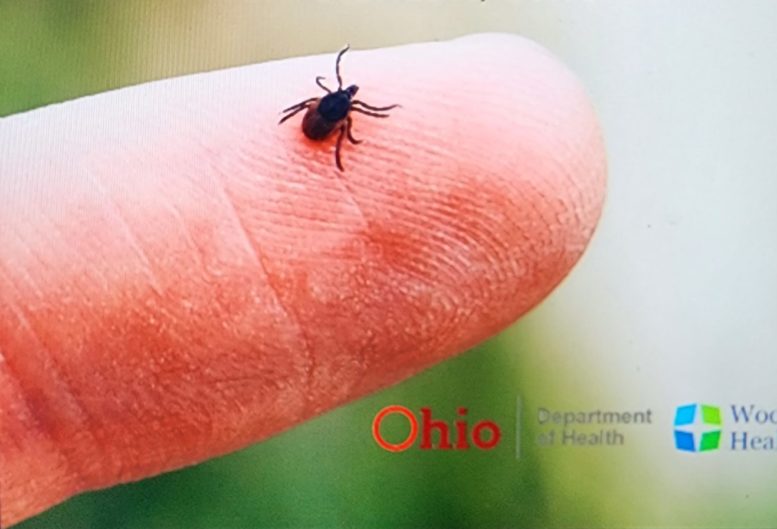While preparing to enjoy the outdoors with family, friends and pets, it’s good to be prepared and “Be Tick Smart.” Diseases spread by ticks are an increasing concern in Ohio and are being reported to the Ohio Department of Health more frequently in the past decade, with Lyme disease and Rocky Mountain spotted fever being the most common.
The community is invited to a “Be Tick Smart” presentation on April 12, at 7 p.m., located at the Veterans Memorial Building, City Park, 520 Conneaut Ave., Bowling Green.
Leeanne Garrett, a public health entomologist with the Ohio Department of Health, will provide information on the surveillance methods being used throughout the state to monitor tick populations, the species of ticks found in Ohio, the potential diseases they can carry, and ways to “Be Tick Smart.”
“The Zoonotic Disease Program tracks and responds to tickborne diseases,” said Garrett. “We collect and analyze data to detect trends in disease activity, investigate reported cases of tickborne diseases, collaborate with other state agencies, and educate Ohioans about disease risks and prevention strategies.”
As part of the restoration process at Wintergarden/St. John’s Nature Preserve, park staff identify and monitor the plants and animals that reside in the preserve. In the past, park goers have been advised to be on the lookout for the American dog tick. Recently, park staff have worked with the ODH to collect and confirm the presence of the blacklegged tick in the preserve as well.
“We want our park attendees to be aware that they should be on the lookout for this newly observed tick. It’s much smaller than the American dog tick and can be active year-round,” said Cinda Stutzman, Natural Resources Manager.
“Residents are encouraged to be aware of ticks and all vectors when enjoying the outdoors. Taking proper precautions is the best protection against vector-borne diseases,” said Lana Glore, Wood County Health District. “Those who may need help identifying a tick they’ve encountered, can contact our Environmental Health division for assistance, as we work closely with ODH entomologists on proper identification and reporting methods.”
Things to keep in mind:
- While some species of ticks are active during certain months of the year, the blacklegged tick can be active year-round when temperatures are above freezing. Check with your veterinarian for recommendations regarding year-round tick and flea prevention medication.
- Residents should do a thorough tick check of themselves and pets after working/playing outdoors.
- Wear long pants, long sleeves and long socks. Tuck pant legs into socks and shirts into pants to keep ticks on the outside of clothing. Light colored clothing can help with spotting ticks more easily.
- Park visitors should stay on the trails while using local natural areas and parks. Ticks do not drop out of trees or fly. They are most likely to be found in areas of tall grass, brushy areas, or along the edge of roadsides, trails, and wooded areas.
Tick identification materials and additional information can be found at: Ohio.Gov/Tick

